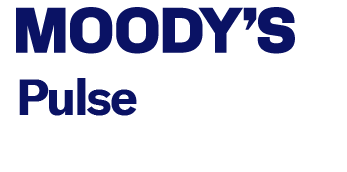How to Monitor Business Credit
In today’s market, staying up to date with a business’ financial health has become increasingly difficult. Regular business credit monitoring helps companies protect their receivables by staying up to date with their customer’s financial health.
By regularly monitoring their customers’ financial well-being, credit departments also gain insight into the ever-evolving creditworthiness of a company. In this blog post, we will explore various methods and tools for effectively monitoring business credit.
Why Business Credit Monitoring Is Important
Monitoring a customer’s credit is one of the most important credit risk management best practices. Through the surveillance of a borrower’s creditworthiness, creditors can recognize potential hazards and make knowledgeable judgments regarding extending additional credit to that enterprise.
1. Early Detection of Potential Issues
By monitoring a business’ financial health, businesses can identify potential issues before payments are at risk. For example, if a customer’s credit score drops significantly, it could be an indication that the business is experiencing financial difficulties and may not be able to pay its bills in a timely manner or at all. Early detection of these issues allows businesses to act before payments are at risk. Credit departments can then adjust credit limits, hold back future shipments, or decide not to do any further business with the customer.
2. Mitigating Risk
Companies take on risks to sell their goods and services to other businesses, but they also want to manage those risks as much as possible. By monitoring their customer’s financial health, credit departments can identify potential red flags that could indicate a business will not be able to pay for goods or services already received. This allows businesses to protect their revenue from charge-offs resulting from unpaid invoices.
3. Improving Decision-Making
By having access to real-time data about a customer’s financial health, credit departments can make more informed decisions about managing their accounts receivable. The more timely data credit departments have, the better they can understand the status of their customer’s business. This can then mitigate risks and increase the likelihood of successful repayment for goods and services.
Learning How to Monitor Business Credit
In this section, we will delve into the key aspects of credit monitoring that credit managers need to master. We will cover the analysis of financial statements, the examination of essential financial ratios, and the role of credit reporting agencies, all of which contribute to effective credit monitoring.
Analyzing Financial Statements
A backbone of credit analysis, financial statements analysis provides vital information about a business’ financial health. Credit managers should focus on examining balance sheets, income statements, and cash flow statements. Unfortunately, most of the companies in the U.S. are privately held, so much of their most valuable business information is not disclosed.
Business Credit Reports & Scores
Business credit scores and information from business credit reports are a key factor in the credit decision-making process and beyond. They’re used by credit managers to assess the creditworthiness of a business, determine appropriate credit limits, and monitor changes in credit risk.
Credit bureaus create scores and compile reports using traditional data sources including firmographics, payment behavior, legal filings, and other public facing information. Credit managers pull these reports frequently to check for updates or changes in their customers scores or information.
Alternative Credit Data
Increasingly, credit managers and financial executives are recognizing the limitations of conventional business credit evaluations based on historical payment habits. Traditional payment data will always have its place, but the way companies spend their money speaks even greater volumes about their priorities and direction.
The details and trends revealed in specific spending areas can tell you if a company is experiencing growth or decline, if it is expanding and adding personnel, or contracting and treading water financially. Credit departments are turning to alternative data to access information on the purchase behavior of their customers.
In-depth analytics and insights on how a company is spending its money can be accessed through the Moody’s Analytics Pulse platform, powered by a database of over $2 trillion in business-to-business transaction data over 24 months.
Utilizing Timely, Accurate Data
Given the importance of credit data on mitigating credit risk, it’s important to understand how credit reporting agencies obtain, compile, and update their data. Credit reporting agencies typically update data regularly, but the frequency of updates may vary depending on the type of information and the data source. This can make it difficult for credit managers to stay-up-to date with the latest changes in their customer’s credit information by pulling routine reports.
Those who use Moody’s Analytics Pulse free credit monitoring alerts receive notifications as soon as their customer’s credit changes. Without this kind of automation, credit departments have to manually check for updates throughout the approval process. If they don’t do this, a company that applied for a line of credit before negative data hit their credit report could, hypothetically, be approved by mistake.
Tools and Resources for Monitoring Business Credit
There are several ways to monitor a potential or current customer’s creditworthiness. One of the best business credit monitoring tactics is to enlist the help of a credit reporting agency that offers detailed reporting and online monitoring tools.
Innovative tools give your business and its accounts receivable process added agility and performance. Moody’s Analytics Pulse makes it easy for businesses to monitor accounts for thousands of risk factors. In addition to real-time updates, we provide detailed credit reports.
These include a comprehensive look at a company’s credit history and current credit status. However, you will only be charged for the reports you choose to download — and nothing else. Everything else, including our monitoring tool and business directory, is completely free.
Ready to learn more? Schedule a demo with one of our credit experts today.



